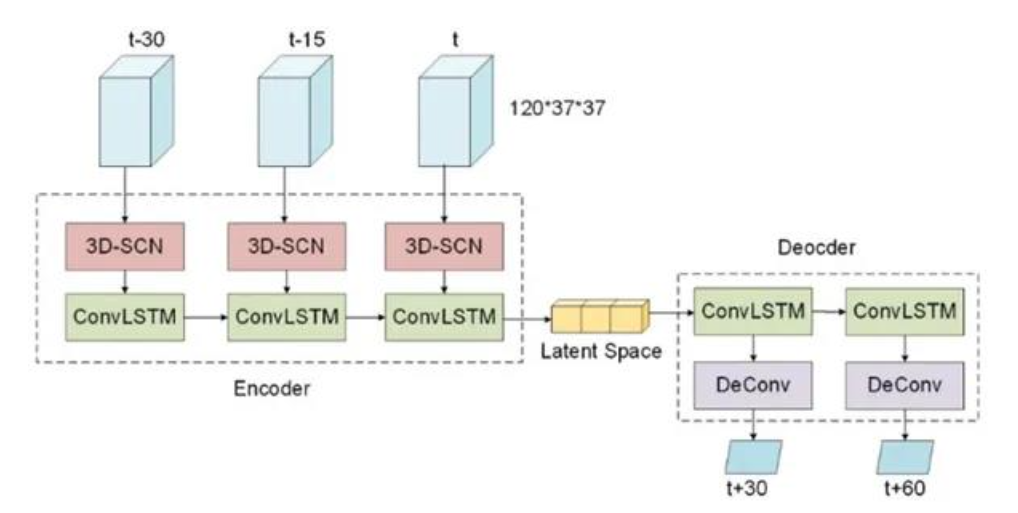The Han Lei team from the Faculty of Information Science and Engineering has made a series of new advances in the field of artificial intelligence disaster environment early warning.
Publishing time:2021-12-15
Recently, the Han Lei team from the School of Information Science and Engineering at Ocean University of China published a series of research papers on artificial intelligence disaster environment early warning technology in top journals such as Journal of Geophysical Research and IEEE Transactions on Geoscience and Remote Sensing. Their research results have also been covered by the international renowned science and technology news platform EurekAlert!. Traditional numerical forecasting methods are limited in effectively predicting short-duration and small-scale disaster targets like storms due to issues like spin-up.

The team introduced artificial intelligence and multi-source remote sensing information processing technologies into the field, studying intelligent warning methods for disaster environments, and revealing the critical role of physical variables such as vertical velocity in the mid-low level and perturbation temperature in the mid-high level in the identification and prediction process. They also provided a solution to the applicability issue of the same model in different regions through deep transfer learning. An intelligent warning system for convective storms has been developed, which has been successfully accepted by the expert group of the National Meteorological Center and is currently in business operation, generating significant business benefits.

The team proposed a nested encoder-decoder network method to achieve intelligent deviation correction for numerical weather forecasts. The test results showed that this method achieved the highest improvement in forecast performance of more than 25% compared to ECMWF, which is commonly used in the industry, for difficult issues such as correcting 10-meter wind speed and wind direction. This research achievement was published in Advances in Atmospheric Sciences (AAS) as a cover paper and has been tracked by internationally renowned science and technology news platforms such as EurekAlert! (International media such as New York Times, CNN, BBC, etc. obtain scientific and technological news from this platform). This achievement has been applied to the key research and development program "Key Technologies for Prediction and Guarantee of the Beijing Winter Olympics" and its operational application has been launched in the Beijing Urban Meteorological Research Institute, and will be applied to the meteorological guarantee service for the 2022 Beijing Winter Olympics.


